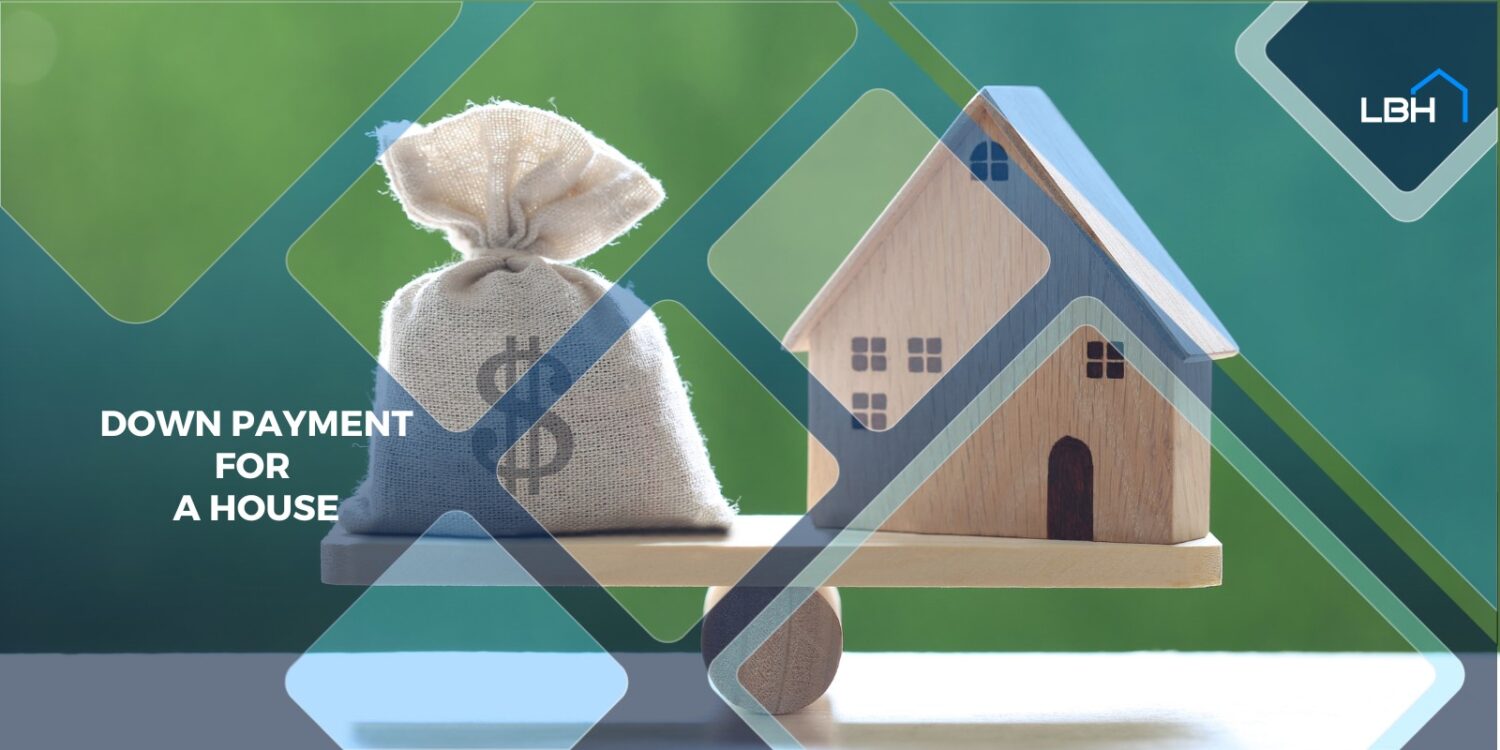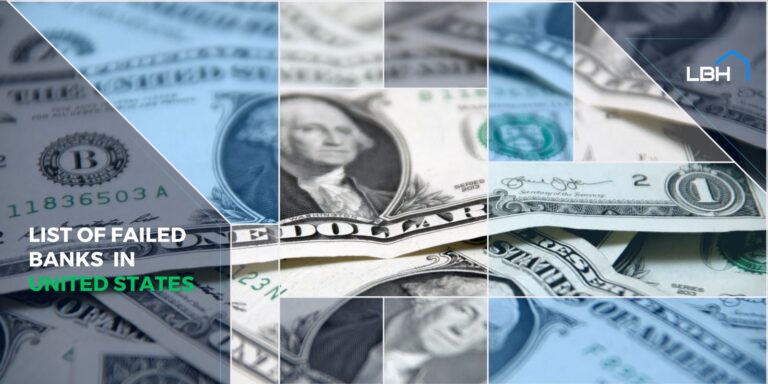Homeownership has always been a major life goal for many individuals and families. But being an expensive endeavor, it requires considerable financial planning and preparation, starting with the house down payment. The common advice is to save 20% of the home’s value for a down payment, which can seem insurmountable with today’s skyrocketing housing prices.
But is the 20% rule etched in stone? This article will expound on the intricacies of down payments and how much down payment you need for a home purchase.
What Is a Down Payment for a House?
A down payment for a house is an upfront cash sum that a borrower or home buyer pays towards the purchase of a house. It’s the initial investment you make when buying a house. A house down payment is usually expressed as a percentage of the total home price.
A 20% down payment means the buyer will put down 20% of the purchase price, while 80% will be financed through a home loan or mortgage. Most lenders require a down payment before they offer a mortgage to buy a house, with some exceptions, as discussed in this article.
The Importance of a House Down Payment
A down payment on a house acts as a security for the lender against default. But it goes beyond benefitting just the lender. The borrower also reaps several benefits despite the financial pinch of parting with a huge sum, including the following:
Better Interest Rates and Loan Terms
Mortgage lenders offer high interest rates and unfavorable loan terms if they deem the borrower high risk. A down payment signifies commitment and diligence, translating to a lower risk for the lender. This allows buyers to secure a more favorable mortgage rate with manageable monthly payments.
Lowers the Mortgage Loan Principal
The general rule of down payments is the more you pay upfront, the less mortgage loan principal you owe. For example, a 20% down payment reduces the mortgage loan principal by a fifth, while a 10% down payment will lower it by half that: a tenth. Mortgage loan principal is subject to interest. Therefore, the difference could play out to thousands of dollars in savings over the loan’s lifetime.
Eliminates or Lowers Private Mortgage Insurance (PMI)
As mentioned, lenders need security against default as they are out to make profits, and the down payment covers this. In instances where the down payment is minimal or zero, private mortgage insurance (PMI), also known as mortgage insurance premium (MIP) in FHA loans, acts as security.
The typical 20% rate is usually the threshold for getting rid of PMI, but MIP applies throughout the loan term. It’s worth mentioning that the less you pay upfront, the higher the PMI payments.
Builds Equity Faster
Every homeowner wants to have equity in their homes. That’s the whole point of homeownership, after all. A sizable house down payment is the first step toward this goal, as it helps buyers start off with some level of equity. Equity means the difference between how much is owned on a property and its market value.

How Much House Down Payment Do You Really Need?
Conventional wisdom holds that 20% is the standard down payment for buying a home. This starts you off with considerable equity, eliminates premium mortgage insurance for traditional mortgages, and guarantees favorable terms. But 20% is a suggestion rather than a requirement.
The minimum house down payment requirements differ depending on the loan type. Below are the four major types of home loans and their down payment requirements to help you plan ahead:
Conventional loans: These are the most popular and conforming type of home loans and are not backed by the government. They have a minimum 3% and 5% down payment requirement for first-time buyers and repeat buyers, respectively. Borrowers with credit scores lower than 620 may need a larger home down payment.
Federal Housing Administration (FHA) loan: FHA loans are government-backed, meaning they have more relaxed requirements than conventional loans. If you have a credit score of 580 or above, you’re eligible to make a down payment of as low as 3.5%. The down payment requirement increases to a minimum of 10% if your credit score falls between 500 and 579.
Department of Veterans Affairs (VA) loans: No down payment is required for eligible active-duty service members, veterans, and surviving spouses. Length of service and the discharge reason affect eligibility.
Department of Agriculture (USDA) loans: USDA loans are also zero down payment mortgages guaranteed by the U.S. Department of Agriculture. They are meant for low- to moderate-income borrowers in eligible rural and suburban areas.
What Are the Minimum Down Payment Requirements for Secondary Homes?
The down payment requirements for secondary properties are usually different. Secondary homes, such as vacation homes, often require a down payment of at least 10%.
For investment property, the minimum down payment is usually 15% for a credit score above 720 and 20-25% for those with lower credit scores. Be sure to check with your lender for specific requirements. Note that government-backed loans do not apply to secondary homes.
What Is the Average Down Payment on a House?
According to the National Association of REALTORS®, the average down payment on a house for first time buyers is 6%, while repeat buyers put down an average of 17%.
The median home sale price for homes purchased with financing reached $319,500 in the third quarter of 2023, according to ATTOM Data Solution. This translates to an average down payment of about $19,000 and $54,000 for first-time and repeat buyers, respectively.
Below are the five cities that recorded the highest average down payments in the third quarter of 2023:
- Santa Rosa, CA – 25%
- North Port, FL – 23.5%
- Fort Collins, CO – 23.2%
- Asheville, NC – 21.8%
- Boston, MA – 21%
However, these figures represent averages and should not be taken as prescriptive. Home down payment amounts vary significantly based on factors such as the home’s price, the loan type, and the current state of the housing market.
How Much Should You Put Down on a House?
You should put down as much as you can realistically afford and maintain financial stability. While a 20% or more home down payment is recommended, it’s not always feasible. Consider the highest amount you can comfortably put down without depleting your emergency fund or other savings.
You don’t want to be left financially strained simply because you put all your resources into the home down payment. Use online mortgage calculators to check how different down payment rates will affect your monthly mortgage payment.
Additional Considerations to Determine Your Home Down Payment Amount
Below are other factors you may need to take into consideration when deciding on your down payment amount:
Closing costs: Ensure you have enough to cover closing costs, which range between 2% and 6% of the loan amount.
Moving expenses: Moving can be costly, so ensure you have enough set aside for this purpose.
Emergency fund: It’s important to maintain an emergency fund even after making a down payment on a house.
Home repairs and renovations: New homes often require repairs, renovations, and personalization. Set aside some money for these expenses before making a down payment for a house.
Other financial goals: Your house down payment shouldn’t derail your savings for other financial goals such as retirement, college education, or paying off debt.
Consider your options: The available options will dictate the down payment you can make by a large margin. For example, a VA loan allows you to put down little to no money without mortgage insurance. For FHA and USDA loans, you will have to pay insurance regardless of the down payment amount or equity.
Strategies for Saving for a Home Down Payment
If you struggle with saving money, the following strategies can help you get started:
Create a budget and a timeline: Determine how much you need to save and create a budget to help reach your savings goal within the desired timeline.
Cut expenses: Monitor your spending habits and identify areas where you can make cuts. For example, you can start cooking at home instead of eating out.
Consider additional income sources: If your current job doesn’t allow extra savings, consider taking a part-time job or freelancing.
Automate savings: Automate transfers from your checking account to a savings account. This way, you won’t have to make the conscious and difficult decision to save.
Consider high-yield savings accounts: Now that your ducks are in a row, look for ways to earn maximum return on your savings. High-yield savings and money market accounts are some options you can explore.
How to Buy a House With No Money Down
To buy a house with no money down, consider the following options:
- VA loans
- USDA loans
- FHA loans
- Down payment assistance programs
Down Payment Assistance Programs for First-Time Homebuyers
Being unable or unwilling to save shouldn’t stop you from realizing your dream of first-time homeownership. . Besides the favorable government-backed loans, there are other down payment assistance programs such as those from:
State housing finance agencies (HFAs): These offer low- and no-interest loans and grants for down payments and closing costs.
Nonprofits: Organizations such as Habitat for Humanity provide opportunities for affordable homeownership through various ways such as financial education and sweat equity.
Employers: Some employers offer down payment assistance as part of their employee benefits package.
Government programs: Some states and local governments offer grants and forgivable loans that can be used towards a down payment.
Can You Make a Down Payment on the Cost of a Tiny House?
Yes, you can put a down payment on a tiny house. The cost of tiny houses can also be financed, but the options may vary depending on whether your tiny house is classified as an RV or a permanent residence. For tiny homes being purchased from tiny house builders providing RVIA (Recreational Vehicle Industry Association)-certified houses, RV loans are a popular option. These loans are similar to conventional car loans and require a 15-20% down payment.
For permanent tiny houses built on a foundation, financing options may include traditional mortgages or personal loans. In these cases, the down payment requirements may vary depending on credit score and lender.
20% Down Payment: A Suggestion, Not a Requirement
Contrary to popular belief, you don’t need a 20% down payment to buy a house. However, the 20% threshold is essential to avoid mortgage insurance. Remember that home prices directly correlate with down payment requirements, meaning that higher-priced homes will require a bigger down payment.
Credit score also determines how much the lender will ask for as a down payment. For lower down payments, consider government loans, but remember that you will have to pay mortgage insurance for the entire loan duration.
FAQs
How much do you need for a down payment on a $300,000 house?
You need about $60,000 for a down payment on a $300,000 house. This is equivalent to 20% of the total purchase price, meaning you will avoid private mortgage insurance (PMI) for conventional mortgages and secure a better interest rate. However, as low as $15,000 could be enough for government-backed loans.
Can I put down less than 20% on a house?
Yes, you can put down less than 20%. If it’s a conventional loan, you will need to pay mortgage insurance until you reach 20% equity in your home. For government-backed loans such as FHA or USDA, mortgage insurance premiums apply regardless of the down payment amount.
What is a minimum down payment on a house?
The minimum down payment for a house varies depending on the type of loan and the lender’s requirements. Conventional loans can have as low as 3% down payment, FHA loans require a minimum down payment of 3.5%, while USDA and VA loans don’t have a specific minimum amount.
Is $20,000 enough for a down payment on a house?
Yes, $20,000 can be enough for a down payment on a house, depending on the purchase price, credit score, and loan type. For the average home valued at $300,000, a down payment of $20,000 would cover approximately 7% of its price. In most cases, this wouldn’t be enough for a conventional loan but might be sufficient for an FHA or USDA loan.












